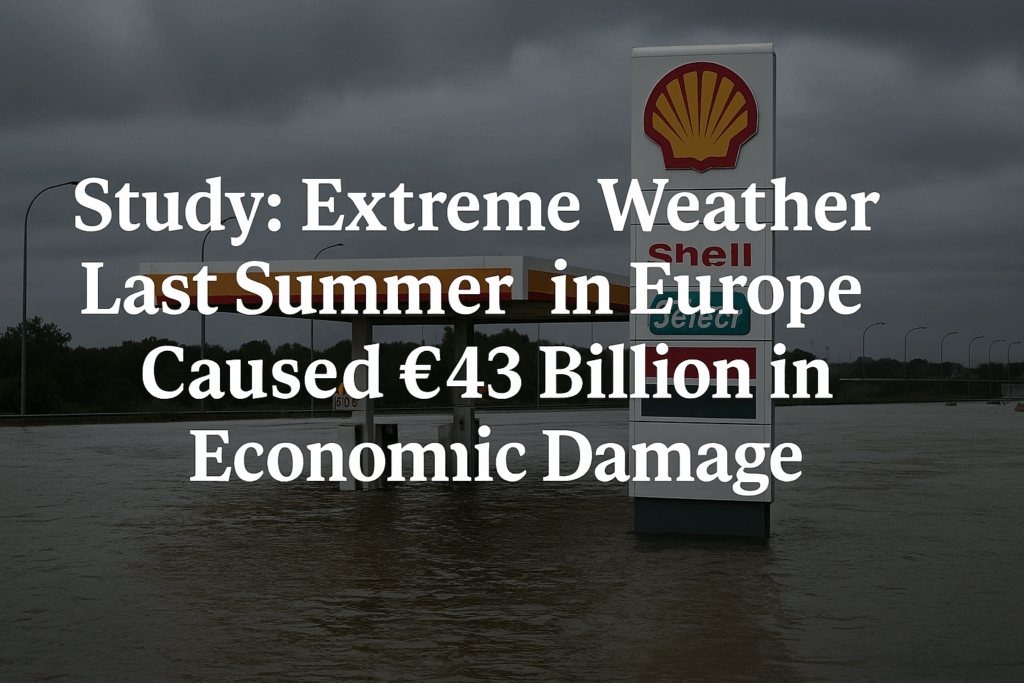Heatwaves, droughts, and floods that struck Europe over the past summer caused an estimated €43 billion in immediate economic losses, according to a new study by the University of Mannheim in collaboration with economists from the European Central Bank.

The researchers looked at the true cost of climate change in a broad sense: not only the direct and tangible destruction of homes and crops, but also indirect effects such as disruptions to rail transport and reduced labor productivity during extreme heat. Using meteorological data and economic modeling, they calculated that the macro-economic costs could rise to €126 billion by 2029.
The authors stress that their estimates are “conservative,” since several major events—such as the record-breaking wildfires in Southern Europe last month—were not included in the analysis.
Unequal Impact Across Europe
The damage is not evenly distributed. Low-income regions and those with higher temperatures are hit the hardest. Spain, France, and Italy, which faced prolonged heatwaves and drought, each recorded losses exceeding €10 billion this year alone. In the medium term, these costs could rise beyond €30 billion per country.
Central and Northern Europe saw less immediate damage, but floods are becoming increasingly common there as well, suggesting that the costs of climate change will continue to mount across the continent.
Long-Term Consequences
The study also highlights the long-term drag on productivity. Four years after a drought, a region’s GDP is on average 3 percentage points lower than before. In the case of flooding, GDP remains 2.8 percentage points lower.
These findings underscore how climate extremes are not only an environmental challenge but also a profound economic threat—one that will shape Europe’s future growth and resilience in the years to come.


Wow, €126 billion by 2029..